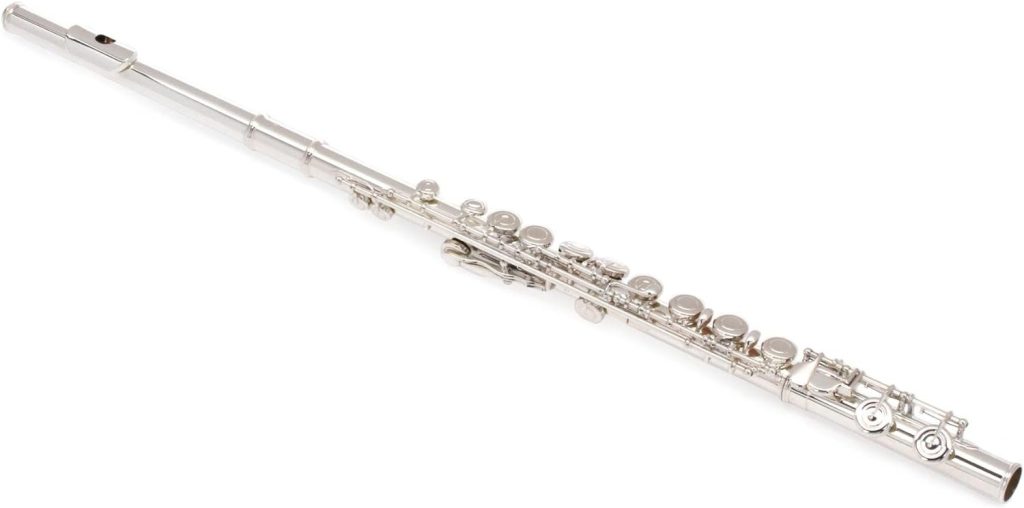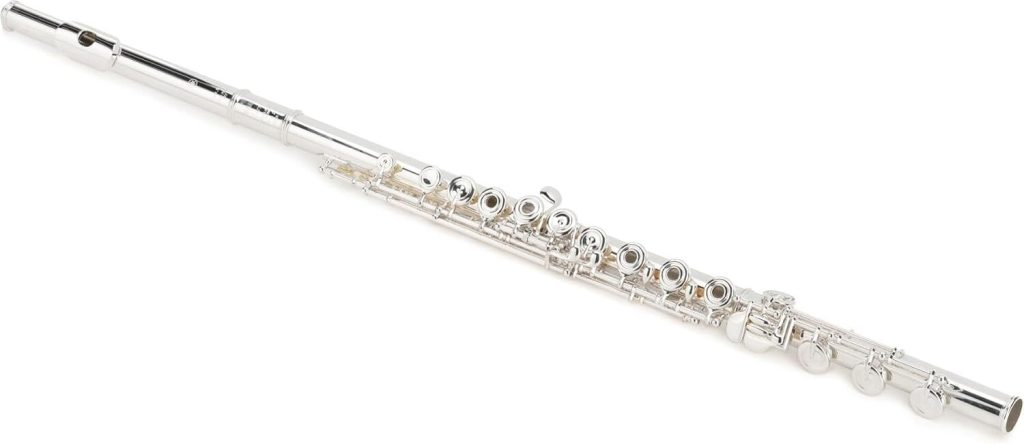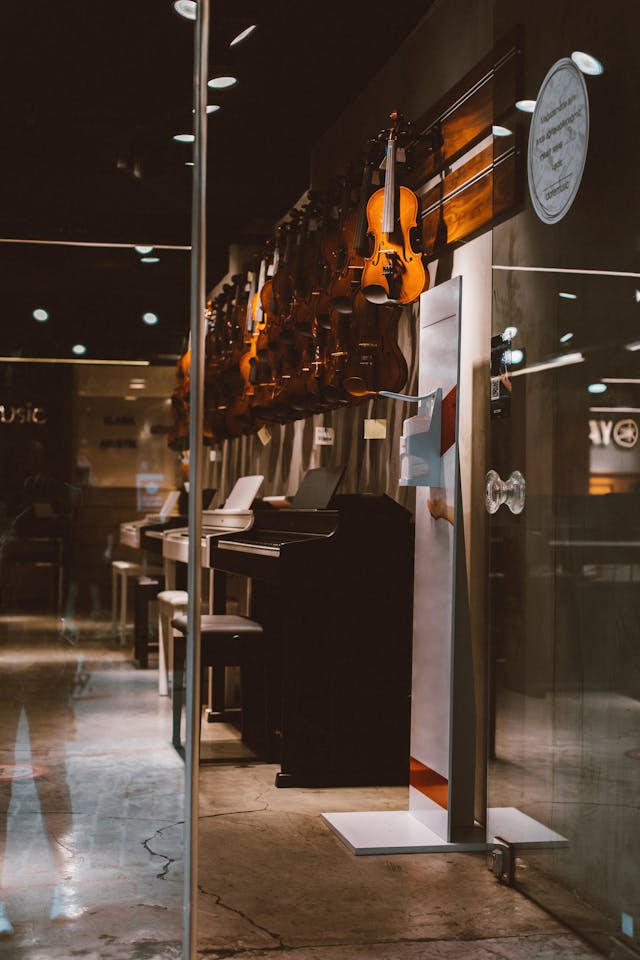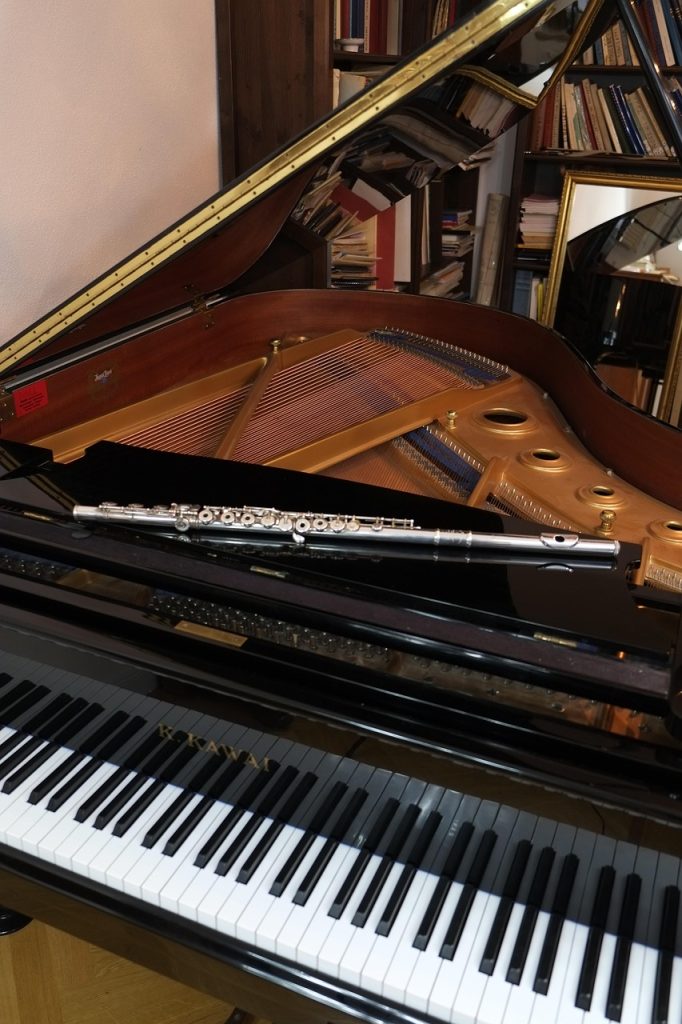This article contains affiliate links. Learn more.
Determining how much to invest in a flute can be a confusing process for many prospective musicians. The price range for flutes spans from affordable beginner models to professional instruments with premium price tags. This wide range often leaves potential flutists wondering what they should expect to pay and what factors influence these costs.
Whether you’re a parent looking to support your child’s musical journey, an adult beginner seeking to learn a new skill, or an intermediate player ready to upgrade, understanding the flute market can save you from making costly mistakes. This guide will help you navigate the various price points, recognize the quality differences between models, and make an informed decision that suits both your musical needs and your budget.
Table of Contents
- 1 Understanding Flute Categories and Their Price Ranges
- 2 What Makes Student Flutes More Affordable?
- 3 Key Factors That Influence Flute Pricing
- 4 Exploring Student Flute Options
- 5 Rental Programs: An Alternative to Immediate Purchase
- 6 Intermediate Flutes: When and Why to Upgrade
- 7 Professional Flutes: Understanding the Premium Market
- 8 Custom and Handmade Flutes: The Ultimate Investment
- 9 Vintage and Pre-Owned Flutes: Value Considerations
- 10 Digital and Electric Flutes: Modern Alternatives
- 11 Making an Informed Purchase Decision
- 12 Maintaining Your Investment: Care and Upkeep
- 13 Alternative Flute Types and Their Price Considerations
- 14 Learning Resources and Their Role in Flute Success
- 15 Flute Making Traditions and Their Influence on Price
- 16 Adapting to Market Trends: Sustainability and Innovation
- 17 Conclusion: Finding Your Perfect Flute
Understanding Flute Categories and Their Price Ranges
The flute market divides instruments into several distinct categories, each serving different skill levels and needs. Understanding these categories helps narrow down your options and set realistic budget expectations for your purchase.
Student flutes serve as the entry point for beginners of all ages. These instruments are designed to be durable, relatively easy to play, and affordable for families investing in their child’s first musical experience. Student models typically feature simpler mechanisms and materials that keep manufacturing costs lower while still providing a satisfactory playing experience for newcomers. If you’re a student, we’d highly recommend checking out our article over the best flutes for beginners.

Shown above: Gemeinhardt 2SP Student Flute
Intermediate flutes bridge the gap between student and professional models. These instruments offer improved craftsmanship and materials, resulting in better tone quality and responsiveness. Intermediate flutes are ideal for advancing students who have demonstrated commitment to the instrument and need better tools to continue their musical development.

Shown above: Yamaha YFL-222 Intermediate Flute
Professional flutes represent the highest tier of craftsmanship and performance capability. These instruments are designed for serious musicians, including college music majors, orchestral performers, and dedicated adult enthusiasts. Professional flutes feature premium materials, hand-finished components, and precise engineering that allows for nuanced expression and tonal color.

Shown above: Yamaha YFL-677H Professional Flute
What Makes Student Flutes More Affordable?
Student flutes incorporate several design and manufacturing choices that help keep costs manageable while still producing functional instruments. These models offer an accessible entry point for beginners without requiring an overwhelming financial commitment from parents or adult learners.
The material composition of student flutes plays a significant role in their affordability. Most student flutes use nickel silver (which, despite its name, contains no actual silver) or silver-plated bodies. These materials provide adequate durability and reasonable sound quality at a fraction of the cost of solid silver used in higher-end instruments. Some entry-level models may even use silver-plated head joints combined with nickel silver bodies as a compromise between cost and sound quality.
Manufacturing processes also contribute to lower prices in the student segment. While professional flutes receive extensive hand-finishing and individual attention from skilled craftspeople, student models primarily rely on precision machinery for consistent production at scale. This approach significantly reduces labor costs while still maintaining reasonable quality control standards.
Mechanical simplifications further reduce expenses in student models. Many beginner flutes feature simplified key systems that omit certain options found on professional instruments, such as split E mechanisms, C# trill keys, or D# rollers. These simplifications reduce manufacturing complexity and material costs without substantially hindering a beginner’s learning process.
Key Factors That Influence Flute Pricing
Several crucial factors affect the pricing of flutes across all categories. Understanding these elements helps explain the sometimes dramatic price differences between seemingly similar instruments and ensures you recognize the value behind higher-priced options.
The materials used in flute construction significantly impact both price and sound quality. Entry-level instruments typically use nickel silver or silver-plated bodies, while intermediate and professional models feature various precious metals:
- Silver content varies from silver plating (thin layer over base metal) to sterling silver (92.5% pure) to even higher silver content alloys.
- Gold components, ranging from gold-plated parts to solid 14K or 18K gold, add considerable expense while offering distinctive tonal characteristics.
- Platinum, used in some premium professional flutes, represents the highest tier of precious metal options with corresponding price implications.
Handcrafting levels vary dramatically across price points. While student flutes rely heavily on machine production, professional instruments involve substantial handwork by master craftspeople who spend hours perfecting each detail. This artisanal approach ensures optimal performance but requires skilled labor that significantly increases production costs.
The complexity of key mechanisms also influences pricing. Professional flutes offer additional keys, alternative fingering options, and specialized mechanisms that provide technical advantages to experienced players. Each additional key or mechanism requires precise engineering, materials, and assembly work that adds to the instrument’s overall cost.
Exploring Student Flute Options
When starting the flute journey, finding an appropriate student instrument becomes the first practical challenge. The student flute market offers various options that balance affordability with playability for beginners.
Reputable brands in the student flute category have established track records for producing reliable beginner instruments. Companies like Yamaha, Jupiter, Pearl, and Eastman have developed student models that meet the needs of beginners while maintaining consistent quality control. These established manufacturers offer the advantage of extensive dealer networks, available replacement parts, and industry credibility that provides peace of mind when making this investment. We go into it more in this article.
When evaluating student flutes, certain essential features should be present regardless of price point. Plateau (closed-hole) keys are standard on student models and make finger placement easier for beginners. Offset G keys ergonomically position the right-hand keys for better hand alignment. Split E mechanisms, while not absolutely necessary for beginners, can help with producing clear high E notes.
Most student flute packages include important accessories that complete the setup for new players. A case protects the instrument during transport, while cleaning rods and cloths help maintain the flute’s condition. Some packages may also include a music stand, maintenance kit, or introductory method book.
Rental Programs: An Alternative to Immediate Purchase

Many music stores and online retailers offer flute rental programs that provide an alternative path to flute ownership. These programs can be particularly beneficial for younger students whose commitment level remains uncertain or who may grow and eventually require a different instrument size.
Rental programs typically charge a monthly fee that includes insurance against damage and routine maintenance. According to the National Association for Music Education, rental programs allow families to test a student’s interest and commitment before making a larger financial investment. Many rental agreements offer rent-to-own options where a portion of monthly payments contributes toward eventual purchase of the instrument.
The advantages of renting include lower initial costs, the ability to upgrade as the student progresses, and protection against financial loss if the student discontinues playing. The primary drawback is that long-term rental without purchase can ultimately cost more than buying outright. When considering a rental program, carefully examine the monthly cost, maintenance coverage, and rent-to-own terms to determine if this option makes financial sense for your situation.
Intermediate Flutes: When and Why to Upgrade
As players advance in their flute journey, many reach a point where their student instrument begins to limit their musical expression and technical development. Recognizing when to upgrade to an intermediate instrument requires evaluating both the player’s commitment and their current instrument’s limitations.
The transition from student to intermediate flutes typically occurs after 2-4 years of consistent playing and progress. Music educators often suggest upgrading when students demonstrate serious commitment through regular practice, participation in ensembles, and a desire to continue advancing their skills. Physical signs that an upgrade may be necessary include achieving good tone production despite equipment limitations, consistent participation in more advanced ensembles, and interest in performing repertoire that benefits from enhanced instrument capabilities.
Intermediate flutes offer significant improvements over student models. Most feature solid silver head joints that produce richer, more responsive tone quality. The key mechanisms are more precisely engineered with tighter tolerances, resulting in improved reliability and more consistent action. Many intermediate models include additional keys or mechanisms not found on student flutes, such as B foot joints, inline G keys (as an option), or open-hole keys for advanced techniques.
Brands known for quality intermediate flutes include Azumi, Pearl, Yamaha, and Trevor James. According to a study published in the Journal of Research in Music Education, improvements in instrument quality at the intermediate level can significantly impact a student’s rate of technical progress and motivation to continue advancing their skills.
Professional Flutes: Understanding the Premium Market
Professional flutes represent the pinnacle of flute craftsmanship and are designed for serious musicians who require instruments capable of meeting the demands of advanced repertoire and professional performance settings. The substantial price increase from intermediate to professional models reflects significant differences in materials, construction methods, and acoustic engineering.
Professional flutes are typically handcrafted by master flutemakers who dedicate extensive time to voicing and finishing each instrument. According to the Flute Center of New York, one of the leading flute specialty retailers in the United States, professional flutes often undergo 50+ hours of handwork during production. This artisanal approach ensures that each instrument receives individual attention to optimize its acoustic properties and mechanical precision.
Material quality in professional flutes far exceeds that of lower-priced instruments. Most feature bodies made from solid silver with silver content ranging from 92.5% (sterling) to 97% or higher. Some professional flutes incorporate gold or platinum components, particularly in the lip plate and riser areas, which can influence the instrument’s tonal character. The Flutetalk Magazine explains that while these precious metals add substantial cost, they also provide distinctive tonal colors that allow professional flutists to customize their sound.
Key mechanisms on professional flutes offer enhanced precision and additional options for advanced techniques. Features like split E mechanisms, C# trill keys, D# rollers, and Gizmo keys allow performers to execute challenging passages with greater facility. Many professional models also offer customization options in key configuration, allowing players to select the specific combination of features that best suits their playing style and technical needs.
Custom and Handmade Flutes: The Ultimate Investment
At the highest end of the flute market are custom and handmade instruments created by master flutemakers who have dedicated their careers to perfecting the art of flute construction. These bespoke instruments represent the ultimate investment for professional flutists seeking an instrument tailored to their specific playing characteristics and artistic vision.
The custom flute creation process typically begins with a consultation between the flutemaker and the musician. During this process, the flutemaker analyzes the player’s embouchure, hand size, playing style, and tonal preferences. This information guides decisions about headjoint cut, wall thickness, key configuration, and materials. According to research from the Acoustical Society of America, these seemingly small variations can have significant impacts on the instrument’s response, resistance, and tonal profile.
Renowned flutemakers like Brannen, Powell, Muramatsu, and Sankyo have established reputations for creating instruments of exceptional quality. Each maker brings a distinct philosophy and approach to their craft, resulting in instruments with recognizable characteristics. Many professional flutists develop preferences for particular makers based on how well these characteristics align with their playing style and musical priorities.
The waiting period for custom handmade flutes can extend from several months to over a year depending on the maker’s schedule and the complexity of the specifications. While this represents a substantial investment of both time and money, many professional flutists consider custom instruments essential tools for their career, comparable to the fine violins and cellos used by string players.
Vintage and Pre-Owned Flutes: Value Considerations

The market for pre-owned and vintage flutes offers interesting opportunities for players at all levels to potentially find higher-quality instruments at reduced prices. However, navigating this market requires careful evaluation and an understanding of how flutes age and maintain their value.
Unlike many consumer products, well-maintained flutes from reputable makers can retain much of their value and playability for decades. According to the Powell Flutes Conservation Department, silver flutes can maintain excellent playing condition for 50+ years when properly cared for, though they will typically require occasional maintenance and pad replacement. This longevity makes quality pre-owned flutes a potentially wise investment.
When evaluating vintage or pre-owned flutes, several factors require careful consideration. The overall condition of the mechanism is paramount—keys should move freely without excessive play, and pad seals should be intact and airtight. The body should be free from significant dents or damage that might affect acoustic properties. Previous repairs should be assessed for quality, as poor repair work can permanently impact an instrument’s playability. The instrument’s history, including previous owners and usage patterns, can provide valuable context when available.
Reputable dealers of pre-owned instruments typically perform thorough evaluations and necessary reconditioning before offering flutes for sale. Many provide limited warranties on pre-owned instruments, offering some protection for the buyer. For those considering private purchases from individuals, arranging for an evaluation by a qualified repair technician before completing the purchase is highly recommended.
Digital and Electric Flutes: Modern Alternatives
As technology continues to advance, digital and electric flutes have emerged as modern alternatives to traditional acoustic instruments. These innovative designs offer unique capabilities that may appeal to players in certain musical contexts or those exploring contemporary performance techniques.
Digital wind controllers like the Akai EWI and Yamaha WX series provide flute-like playing experiences with electronic sound production. These instruments typically offer extensive sound libraries, MIDI compatibility, and the ability to connect directly to amplification systems or recording interfaces. According to a study in the Journal of New Music Research, digital wind controllers are increasingly used in film scoring, electronic music production, and educational settings where acoustic instruments might be impractical.
Electric flutes, such as those developed by composers like Robert Dick and manufacturers like Kingma Flutes, combine traditional flute design with electronic components that allow for amplification and signal processing. These instruments retain the acoustic properties and playing technique of conventional flutes while offering additional capabilities for sound manipulation and projection in larger performance spaces. The International Computer Music Conference has documented growing interest in these hybrid instruments among contemporary composers and performers.
While digital and electric flutes remain specialty instruments rather than replacements for acoustic flutes, they represent an expanding category within the broader flute market. Players interested in jazz, contemporary, or electronic music may find these options particularly valuable as secondary instruments that expand their performance capabilities.
Making an Informed Purchase Decision
After examining the various categories and considerations that influence flute prices, prospective buyers must ultimately make practical decisions based on their specific circumstances. Several strategies can help ensure that this investment provides good value and serves the player’s needs effectively.
The relationship between player commitment and appropriate investment deserves careful consideration. For young beginners with uncertain commitment levels, starting with a quality rental or modestly priced student instrument often makes the most sense. As commitment becomes clearer and skills develop, gradual upgrades can follow. For adult beginners with stable financial resources and clear commitment, starting with a mid-range student or even intermediate instrument might provide a better long-term value by postponing or eliminating the need for an early upgrade.
Finding a knowledgeable dealer can substantially improve the purchase experience. Specialized flute retailers employ staff familiar with the nuances of different brands and models and can provide valuable guidance based on a player’s specific needs and budget constraints. Many offer trial periods or comparison opportunities that allow players to test multiple instruments before making a final decision. According to the National Association of Professional Band Instrument Repair Technicians, working with dealers who have in-house repair departments often provides better long-term service and support for your instrument.
When making the final selection between several instruments in the same category and price range, personal playing tests become essential. Even flutes with identical specifications can have subtle differences in response and tonal character. Setting aside time to play test multiple instruments allows the player to identify which responds best to their individual embouchure and playing style. If possible, bringing along a teacher or experienced player to provide objective feedback during this process can be invaluable.
Timing purchases strategically can sometimes yield significant savings. Many retailers offer sales during back-to-school seasons or before the winter holidays. Some manufacturers release updated models annually, potentially creating opportunities to purchase previous (but still excellent) models at reduced prices. For advanced students considering substantial investments in intermediate or professional instruments, music education scholarships or instrument grant programs may be worth investigating as potential funding sources.
Maintaining Your Investment: Care and Upkeep
Proper maintenance significantly affects both a flute’s longevity and its retention of value. Understanding basic care practices and maintenance requirements helps protect your investment regardless of the price point.
Daily maintenance forms the foundation of flute care. After each playing session, the instrument should be swabbed internally to remove moisture that can damage pads and promote corrosion. The exterior should be wiped with a clean, soft cloth to remove fingerprints and oils that can tarnish silver surfaces over time. According to The Flute Society of America, consistent daily maintenance can significantly extend the interval between costly professional service appointments.
Professional servicing schedules depend on usage patterns and playing environments. Most flutes benefit from annual “check-up” appointments where a qualified technician can make minor adjustments before small issues develop into more significant problems. More comprehensive overhauls, including complete disassembly, cleaning, and pad replacement, typically become necessary every 3-5 years for regularly played instruments. Professional flutists who play many hours daily may require more frequent service.
Proper storage practices further protect flutes from environmental damage. The instrument should always be stored in its case when not in use, with joints properly aligned and secured. Cases should be kept away from extreme temperatures, direct sunlight, and high humidity areas. For long-term storage, moisture-absorbing products can help prevent internal corrosion, particularly in humid climates.
Alternative Flute Types and Their Price Considerations
While the standard C flute represents the most common choice for beginning and advancing players, several alternative flute types serve specific musical needs. These specialized instruments have their own price considerations that potential buyers should understand.

Shown above: Piccolo player at a carnival
The piccolo, a smaller flute that sounds an octave higher than the standard flute, serves important roles in bands, orchestras, and other ensembles. According to The Woodwind & Brasswind, a major instrument retailer, student model piccolos typically start in a different price range than student flutes. Professional piccolos, particularly those with wooden bodies, can represent substantial investments comparable to professional C flutes. The material choice—plastic, metal, or wood—significantly impacts both price and sound characteristics.
Alto and bass flutes extend the flute family downward, offering deeper tonal registers for ensemble playing and solo repertoire. These larger instruments generally cost more than C flutes of comparable quality due to their increased size and material requirements. As explained by the International Low Flutes Festival, the market for these instruments features fewer manufacturers and models than the standard flute market, potentially limiting options at lower price points.
Ethnic and world flutes, such as the Irish whistle, Native American flute, bansuri, or shakuhachi, represent entirely different traditions with their own construction methods and price considerations. These instruments often emphasize different skills and techniques than Western concert flutes. The World Flute Society notes that while many ethnic flutes have relatively accessible entry price points, mastercraft instruments from traditional makers can command prices comparable to fine Western flutes.
Learning Resources and Their Role in Flute Success
While the instrument itself represents the most significant initial investment, budgeting for quality learning resources substantially impacts a flutist’s progress and satisfaction. These additional investments complement the instrument and help players maximize its potential.
Private instruction provides personalized guidance that accelerates progress and helps prevent the development of problematic habits. According to research published in the International Journal of Music Education, students who receive regular private instruction typically advance more quickly and achieve higher skill levels than those who rely solely on self-teaching or group instruction. While lesson costs vary significantly by geographic area and teacher credentials, allocating resources for at least periodic private instruction offers substantial benefits for players at all levels.
Method books, etude collections, and repertoire publications represent ongoing investments throughout a flutist’s development. Beginning players typically start with foundational method books like those by Rubank, Trevor Wye, or Patricia George. Advancing players gradually add technical studies, etude books, and increasingly challenging repertoire. Digital resources, including subscription-based platforms like SmartMusic or video instruction series, provide additional learning options with their own cost considerations.
Recording equipment, while optional, offers valuable tools for self-assessment and progress tracking. Simple digital recorders or smartphone applications allow players to evaluate their sound and identify areas needing improvement. More advanced players might consider higher-quality recording setups that provide clearer, more detailed audio reproduction for serious self-study and audition preparation.
Flute Making Traditions and Their Influence on Price
The global heritage of flute making encompasses diverse traditions that continue to influence modern instrument design and pricing. Understanding these traditions provides context for evaluating different approaches to flute construction and their associated costs.
The French flute making tradition, established by pioneers like Theobald Boehm and Louis Lot, forms the foundation of modern Western concert flutes. According to the Library of Congress Musical Instrument Collection, the precision engineering principles established by these early makers continue to define premium flute construction. Contemporary French-tradition makers typically emphasize hand-craftsmanship and refined voicing techniques that contribute to higher price points but also to instruments with distinctive tonal characteristics.
The Japanese flute making tradition emerged more recently but has gained tremendous respect within the global market. Companies like Muramatsu, Sankyo, and Miyazawa combine traditional handcraft techniques with precise modern manufacturing technologies. The Japan Flutists Association notes that Japanese makers often emphasize mechanical precision and reliability alongside tonal considerations, resulting in instruments that perform consistently across their entire range.
American flute making traditions, developed by makers like William S. Haynes and Verne Q. Powell, have established distinctive approaches that blend European traditions with innovative engineering. Contemporary American makers continue to influence the premium flute market with approaches that often emphasize powerful projection and flexible tonal palettes suitable for diverse performance contexts.
Adapting to Market Trends: Sustainability and Innovation
The flute market continues to evolve in response to broader cultural trends, particularly regarding sustainability concerns and technological innovation. These developments introduce new considerations for prospective buyers evaluating long-term investments.
Sustainable material sourcing has become increasingly important within the instrument manufacturing industry. According to the Forest Stewardship Council, which certifies responsible wood harvesting practices, consumers increasingly seek instruments made with sustainably sourced materials. Some manufacturers now offer flutes with recycled silver components or wooden headjoints harvested from certified sustainable forests. While these eco-friendly options sometimes carry premium prices, they allow environmentally conscious musicians to align their purchases with their values.
Digital integration represents another emerging trend in the flute market. Manufacturers like Yamaha have developed “hybrid” instruments that combine traditional acoustic design with digital sensors that can interface with recording software or electronic sound modules. The Audio Engineering Society reports growing interest in these tech-enhanced instruments among recording artists and performers who frequently work in amplified settings.
3D printing technologies have begun to influence flute manufacturing, particularly for specialized components and experimental designs. Research presented at the International Symposium on Musical Acoustics suggests that these technologies may eventually reduce production costs for certain instrument components while allowing for more personalized customization options.
Conclusion: Finding Your Perfect Flute
Finding the right flute involves balancing multiple factors including budget constraints, player needs, and long-term value considerations. By understanding the various price categories and what they offer, you can make a confident, informed decision that supports musical growth without unnecessary financial strain.
For beginners, the focus should remain on finding an instrument that provides reliable playability and reasonable sound quality within an affordable price range. As skill and commitment develop, graduated upgrades allow for instruments that grow with the player’s abilities. For advancing and professional players, the investment in higher-quality instruments delivers tangible benefits in terms of tonal possibilities, technical reliability, and artistic expression.
Remember that while price often correlates with quality, the most expensive flute is not necessarily the best choice for every player. Individual playing characteristics, musical goals, and financial circumstances all influence what constitutes the “right” instrument. By combining the information in this guide with hands-on trial experiences and expert advice, you can navigate the diverse flute market with confidence and find an instrument that inspires your musical journey for years to come.
Disclaimer: As an Amazon Associate, I earn from qualifying purchases. All product recommendations are based on research and experience rather than direct testing of every instrument mentioned. Specific prices have been omitted as they vary by retailer and change over time.

